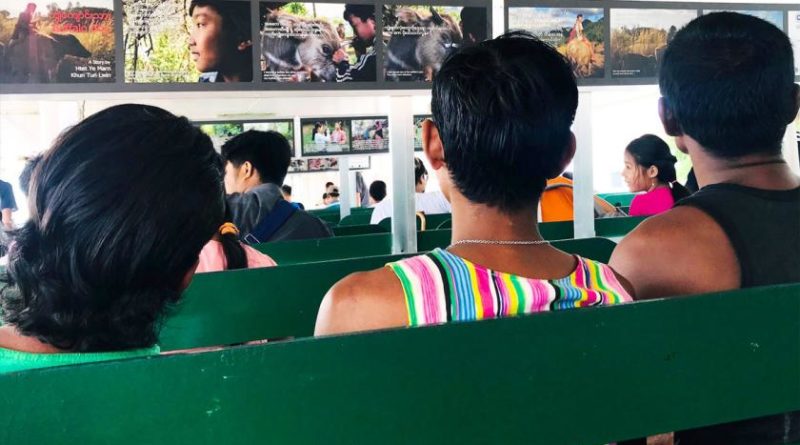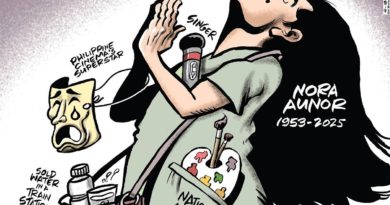Yangon Photo Festival: World Day Against Child Labour
Dala Ferry Exhibition. Photo – May Co Naing
.
Bringing art to the street – World Day Against Child Labour
.
Last Wednesday was “World Day Against Child Labour” (WDACL) a global day organised by the International Labour Organisation (ILO) to raise awareness of all forms of child work.
.
The ILO’s broader aim is to eliminate child labour around the world, with a secondary focus on reducing exploitation and exposure to harmful work practices in places where child labour still exists.
.–THIS SPACE BELOW IS RESERVE FOR YOUR ADVERTISEMENT –

Myanmar, unfortunately, is one of those such places – where some 600,000 children are still engaged in hazardous work.
To draw attention to the issue the ILO, in partnership with Photo Doc and the Yangon Photo Festival, created a series of photo stories from around the country – documenting the lives of child workers.
Rather than confine the work to an exhibition space, the creators decided to take the images to the streets. The show includes large-scale photo installations at three main locations in Yangon: Junction city Mall (9 to 13 June), Dala Ferry (9 to 25 June), Yangon Central Railway Station (11 to 25 June).
The stories are compelling, told with few words and bold images.
“Buffalo Boy”, for example, tells the story of a young boy in Shan state who damaged his eyes while play fighting with friends. His injury caused him to miss out on school, and instead he works with his uncle looking after buffalos.
.–THIS SPACE BELOW IS RESERVE FOR YOUR ADVERTISEMENT –

The images of Buffalo Boy are stunning, showing the beautiful Shan mountains and paddy fields surrounding the buffalo paddocks. Buffalo boy works throughout the entire day, with only food and shelter for compensation. The story depicts his bond with the animals, shown through his washing their eyes – taking measures to make sure they don’t lose their eyesight to the farm parasites and bugs.
Each story shows the subject’s lives as they are lived right now, what they do and how they work. All of the stories have a focus on school – or the lack of it, in these children’s lives.
“Day and Night” is the story of a young girl from the delta region. “It’s 11 pm. Time to wake up for the first shift,” the first caption reads. “I don’t have a real name. People call me Big Karen. I wonder why … I am not a Karen and I am not big … I am only 10.”
The photo series shows her waking up, playfully shoving her sister, before going off outside to dig up mounds of clay for a brick-making company. The backdrop in the next two photos is the rising sun in the early morning, lighting up a vast landscape of neatly stacked bricks. The work is hard, and takes time away from family and being able to go to school.
.
 .
.
‘Khun Sin Myo, also known as ‘Buffalo Boy’, poses in front of the exhibition. Photo – Andrew King
.
“My father had a stroke and he is paralyzed. He can only work during the morning shifts,” one of the slides explains.
When it comes to child labour the relationship between parents and children, poverty and family roles are complicated, and this photo show does an excellent job to present this to the public – in the most public of public spaces (a shopping mall, the railway station and the on the ferry).
“Poverty is one of the root causes for child labour, but there is still much that can be done to prevent it,” Rory Mungoven, ILO Liaison Officer in Myanmar, said during the press conference held at the Pan Pacific Hotel this Tuesday.
“We acknowledge efforts made by Myanmar to address child labour and encourage the implementation of the National Action Plan on Child Labour as a priority along with the ratification of ILO Convention 138 on the minimum age for employability,” he said.
Rates of child labour have decreased in Myanmar over the past few years, and the photo show hopes to improve awareness around these issues.
Christophe Loviny, Director and Trainer at the Yangon Film Festival, was instrumental in training the photographers, and their work will be displayed in public exhibitions in Nay Pyi Taw as well as here in Yangon. They will also be conducting workshops in the Mon, Shan, Bago and Sagaing regions
For anyone interested in the exhibitions, they’re free. Get out there and check them out – they’re huge, interesting and very engaging.
–THIS SPACE BELOW IS RESERVE FOR YOUR ADVERTISEMENT –











